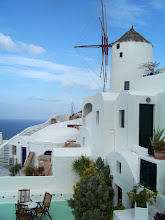Members of the newly formed Penn State Environment, Ecology and Education in the College of Education (3E-COE) group and other environmental activists gathered to protest the sale and use of plastic water bottles at Penn State. The activists also delivered a letter to Penn State President Graham Spanier's office asking him to ban the sale of disposable water bottles on campus.
"Eliminating water bottles on campus isn't without precedent," said Alexandra D'Urso, co-founding member of 3E-COE, citing Washington University in St. Louis as a university that prohibits the sale of plastic water bottles on campus. "We're not asking people to make huge cultural changes."
The letter to Spanier spelled out the environmental and health concerns 3E-COE says are associated with the use of plastic water bottles and gave examples of their negative effects, particularly the amount of discarded plastic polluting the oceans.
(full report)
Instead of creating mountains of landfill out of plastic bottles, why can't we carry water in an eco-friendly and artful bottle such as SIGG's product? A simple change in our daily habits can make a huge difference on our planet!



























 Gehry’s new addition to the Art Gallery of Ontario is under construction right now. Unlike his signature sculptural exterior, this building has a simple linear transparent skin while the crazy forms are kept inside.
Gehry’s new addition to the Art Gallery of Ontario is under construction right now. Unlike his signature sculptural exterior, this building has a simple linear transparent skin while the crazy forms are kept inside.
 Later we walked by the Graduate House by Morphosis and Leslie L. Dan Pharmacy Building by Norman Foster on Univeristy of Toronto campus, the last two stops of my architectural tour.
Later we walked by the Graduate House by Morphosis and Leslie L. Dan Pharmacy Building by Norman Foster on Univeristy of Toronto campus, the last two stops of my architectural tour. 





















